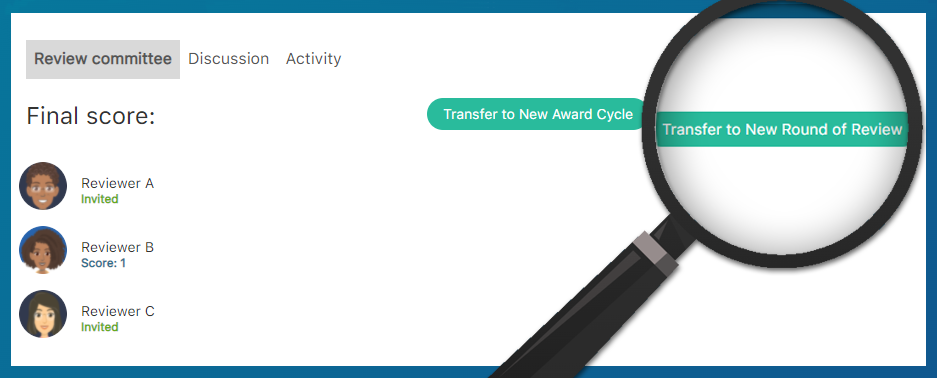
Multiple Rounds of Review
Making decision can be difficult even in its simple, straightforward form. However, making impartial, savvy decisions based on remarkably insightful knowledge in the selected field of interest without the help of the field’s experts might prove impossible.
When administering awards or grants, the most reliable help you can count on is the invaluable input provided by the reviewers. This does not mean however, that the reviewers are available 24/7 and that they will be ready to provide comments as soon as you contact them. With a lot to juggle on their hands, volunteering their time and expert opinion is incredibly nice of them. And not only that - reviewers’ input is the key ingredient of a successful peer review process.
Therefore, it is important to respect reviewers’ limited time and focus on coordinating the review process as efficiently as possible.
1. Filter out the applications which don’t make the criteria
This stage should be completed prior to reviewers’ engagement. In this way you will show that you appreciate reviewers’ precious time and that you understand that this part of the process is not their responsibility. The easiest way to manage this effortlessly is to leverage a smart, well-thought-out submission form that includes the crucial questions to make this sorting-out painless.
2. Make the first round of review as efficient as possible
An ideal reviewing process would be to have all the top experts you invite agree to provide an input and not only that, but they provide it in no time and all of them place the candidates in the same order. However, this does not happen very often. The reviewers you need might be busy, even the ones who agree to provide comments might take more time than you had in mind, their comments might be inconclusive, so you would have to contact them again and ask for an explanation, and so on - the list is endless.
In order to make sure your first (and hopefully the last) round of review is as efficient as possible, there are a few things to have in mind.
- set clear expectations of the reviewer’s task
- define time frame
- use reminders and thank you’s – not too few and not too many
- More often than not, your first round of review might not establish a desired hierarchy of the submitted applications. This is why it is always helpful to leave a possibility for the second round of reviews.

3. Another round
Another round of review might not fill the reviewers with joie de vivre, as it fills Mads Mikkelsen’s character in the hit movie of the same name, but it can give you a piece of mind, especially in situations when several candidates received almost equal amount of recognition by the reviewers. You are trying to be fair and make sure that the award winner truly is the best one out of the group of such strong candidates. Another round of review gives an option to transfer those several applications into the second round and let the reviewers select the best one.
Of course, multiple rounds of reviewing can also serve in review processes organized in stages, similarly to the stages of job interviewing process – where the first stage includes all candidates, with the number of candidates decreasing with each stage.
